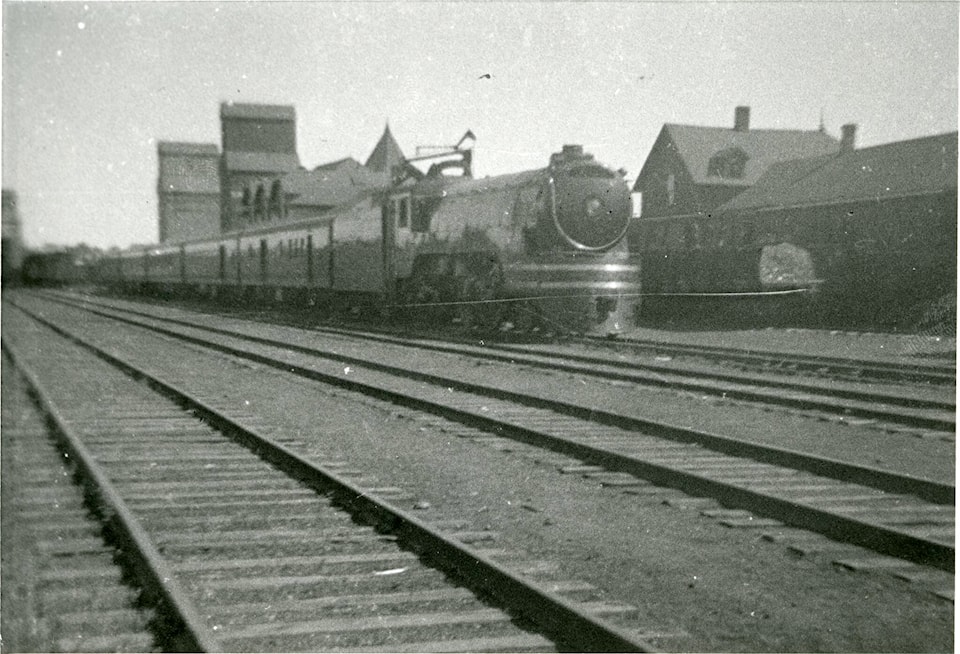Over the decades, Red Deer has had a number of very unique events and exhibitions. One of the most unique and popular took place 86 years ago on June 22, 1936 when a “colossus” whale was brought to Red Deer on rail car as part of a trans-Canada tour.
The tour was originally organized by the Eureka Whaling Co. of Long Beach, California. The advertisements said that the monstrous California finback whale had been caught in the winter of 1934-1935 by the Eureka’s vessel The Hawk, skippered by Captain Jack Lampe.
The animal was huge – 16.74 (55 feet) in length and 68 tons in weight. It was not, despite advertisements to the contrary, the largest whale ever caught. Nevertheless, it was still of such an impressive size that a decision was made to have the whale embalmed in formaldehyde (3200 gallons or 14,450 litres of fluid) and put on a transcontinental tour.
That was no easy feat. A specially constructed, 30.5 metre (100 foot), double -length steel bridge flat car was used to transport the whale. Given the size of that car, it required special handling by the railroad. The sides and ends of the car dropped down to form platforms to allow visitors to get a good look of the whale, with extra elevated spots so that youngsters could get a better view.
There was also provision for “annexes”, at either end, to allow for additional whale and sea related exhibits. These included a giant octopus, a shark, stingrays, a family of live penguins and “Madam Sirwell’s European Flea Circus”.
There was space for Captain Lampe to give lectures and show photos on whales and whaling techniques. He was also a skilled storyteller, although some of his tales were quite creative.
The tour was such a success in the summer of 1935 that a second transcontinental tour was organized across Canada, this time with the participation of the Pacific Whaling Company of British Columbia. However, the second tour was smaller than the first. There was still a metre (18 foot) octopus and some other fishes, as well as Madame Sirwell’s Flea Circus”, but no shark or stingrays and only one penguin, Lady Bug.
The whale’s ribs, vertebrae, eye and ear, baleen and barnacles were shown separately from the whale itself.
Captain Lampe did not go on the second tour. He was replaced by Captain David Barnett, a whaler from New Bedford who had spent “56 of his 73 years on whaling vessels”. He turned out to be just as an entertaining and creative storyteller as Captain Lampe had been.
There was excellent advance work and advertising of the show, creating widespread excitement in Central Alberta. The flat car and associated exhibits were placed on a siding south of the C.P.R. station. Admission was set at 15c each for adults and 10c for children.
Although the exhibit was set for a Monday and did not officially open until noon, people began lining up at 10:30 a.m. Soon literally thousands of people showed up - an estimated 6000 or twice the total population of the City of Red Deer. At some points, there were more than 1000 people lined up at one time to take in the attractions.
There were nearly two dozen staff with the tour, and they spent the entire day giving lectures and answering questions. There was also the showing of a short movie on whale chasing. An explosive harpoon and a large chunk of blubber were also displayed.
Everything was a great success. The local newspapers estimated that the largest crowd since the Golden Jubilee celebrations of 1934 had gathered. Restaurants, ice cream stands and stores were crammed, a welcome development in the years of the Great Depression.
One more memorable feature about the Whale Show that continued to be commented upon for many years to come – the very strong smell of formaldehyde which permeated the City for as long as the “pickled” whale was in town.
Michael Dawe is a Red Deer historian and his column appears on Wednesdays.
